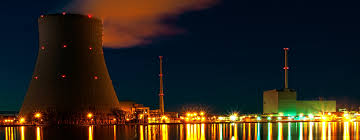
Alagi Yorro Jallow
Historically, nuclear energy has primarily benefited the wealthiest nations. Yet, Africa finds itself on the cusp of a monumental energy revolution fueled by the vast potential of atomic power. Aside from South Africa, which operates the Koeberg Nuclear Power Station—developed with French expertise in the 1970s—most of the continent experiences a nuclear void. Many African countries have relied on fossil fuels for too long, resources that are not only limited but also damaging to the environment and susceptible to price fluctuations.
As Africa’s population is projected to soar to two billion by 2050, the continent faces an urgent and escalating demand for clean, sustainable energy. In sub-Saharan Africa alone, an alarming 57% of the populace—around 600 million people—still lack access to electricity despite the continent being home to 20% of the world’s uranium reserves. Civil nuclear power accounts for less than 2% of Africa’s energy landscape. Without affordable and reliable electricity, Africa’s aspirations for industrial development remain unfulfilled.
The International Atomic Energy Agency (IAEA) highlights that one-third of the world’s emerging nations considering atomic energy are in Africa, indicating a critical shift on the horizon. Many African countries—including Ghana, Kenya, Uganda, Zambia, and Nigeria—are breaking free from outdated apprehensions surrounding nuclear energy, expressing a firm resolve to harness it for their electricity needs. Burkina Faso has recently set its sights on establishing a nuclear power plant by 2030, aiming to double its electricity production. Meanwhile, Kenya is gearing up to initiate construction on its nuclear facility in 2027, with ambitious plans to begin electricity generation by 2030.
However, this promising transition to nuclear energy is not without its challenges. The journey is time-consuming—typically requiring about fifteen years—and fraught with stringent conditions. The financial barrier is considerable, with constructing a nuclear power plant necessitating hundreds of millions of dollars. The lack of robust national regulatory frameworks adds another layer of complexity. Furthermore, guaranteeing the highest levels of safety and security is non-negotiable, making public support crucial for any planned nuclear project. Historical tragedies, such as the Chornobyl disaster in Ukraine (1986) and the Fukushima meltdown in Japan (2011), serve as stark reminders of the profound responsibility associated with nuclear energy.
Nonetheless, the nuclear landscape is rapidly evolving. The advent of Small Modular Reactors (SMRs) introduces new possibilities for safe and cost-effective energy production. Experts assert that these innovative reactors, designed to produce around 300 megawatts—approximately half the output of traditional plants—could significantly enhance energy access across the continent. Yet, skepticism persists among some about the feasibility of SMRs, particularly regarding their costs and slow implementation timelines. While the promise of SMRs is exciting, a prudent and balanced energy strategy is essential. A May 2024 report from the Institute for Energy Economics and Financial Analysis cautioned against an overreliance on SMRs at the expense of investments in renewable sources such as wind and solar energy. These alternatives are critical for a successful energy transition and are immediately more accessible.
Moreover, civil nuclear power is not insulated from the global rivalries that influence many sectors. Dr. Scott Firsing of the Firoz Lalji Institute for Africa recently revealed 440 operational atomic reactors worldwide across 32 nations. The United States leads with 94 reactors, closely followed by China (58), France (57), and Russia (36). These nations manage their energy needs and play pivotal roles in exporting nuclear technology to Africa. For instance, Namibia, a prominent uranium producer, actively seeks investment from China. Zimbabwe is deepening its ties with Russia, which positions itself as a leader in Africa’s nuclear ambitions. The Bulletin of the Atomic Scientists reports that the Russian corporation Rosatom commands approximately 70% of the global market for building new nuclear power plants. It is investing $30 billion in the El Dabaa nuclear power plant in Egypt, which is set to become Africa’s second operational atomic facility by 2028.
Ghana is emerging as a key player in this nuclear narrative, aligning itself with the United States to establish itself as a regional powerhouse in atomic energy. In collaboration with Ghana’s Ministry of Energy and the Ghana Nuclear Energy Institute, the U.S. Department of Energy hosted the inaugural U.S.-Africa Nuclear Energy Summit (USANES) in Accra in October 2023. This landmark event underscored the importance of international partnerships in achieving sustainable nuclear energy growth in the region. A significant atomic agreement was signed in August 2024, centered on Small Modular Reactor technology to bolster clean electricity production and engineer training in Ghana. This strategic focus on nuclear energy showcases this power source’s immense potential. It signifies a pivotal moment for Africa as it seeks to harness its abundant resources and ensure a sustainable energy future.
In conclusion, the potential for nuclear power to transform Africa’s energy landscape is immense. As the continent faces a growing demand for clean and sustainable energy, nuclear power presents a viable solution to meet these needs. The commitment of various African nations to embrace nuclear energy, despite the challenges, signifies a pivotal shift towards a more sustainable future. The advancements in Small Modular Reactors (SMRs) and international partnerships further bolster this transition, offering new possibilities for safe and cost-effective energy production. However, it is crucial to maintain a balanced energy strategy that includes investments in renewable sources such as wind and solar energy. By harnessing its abundant resources and fostering international collaborations, Africa can ensure a sustainable and prosperous energy future for its people.

